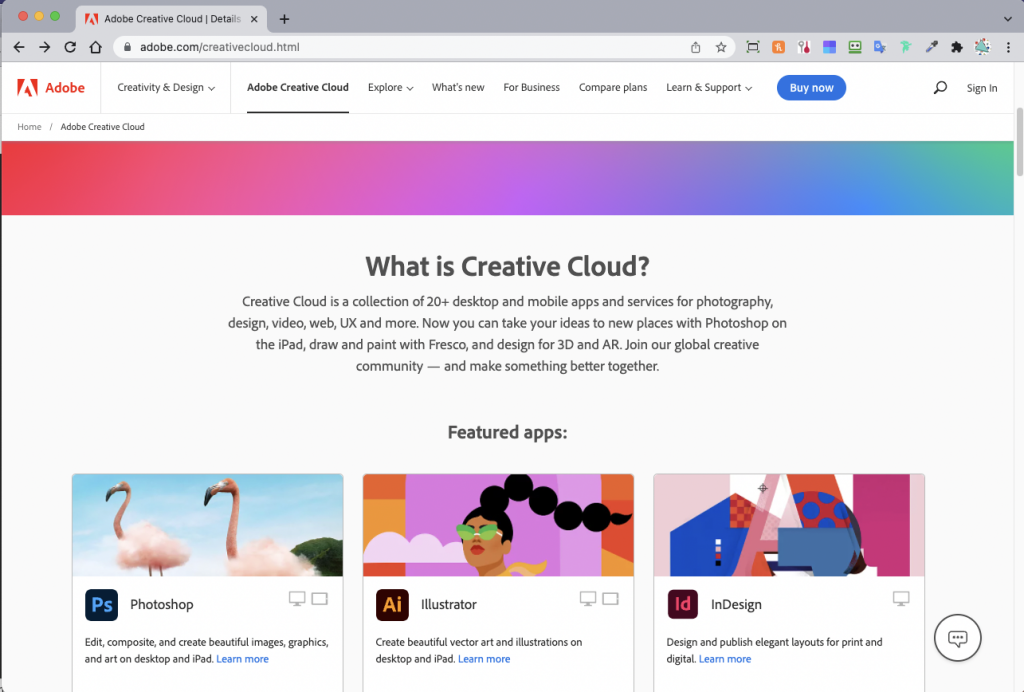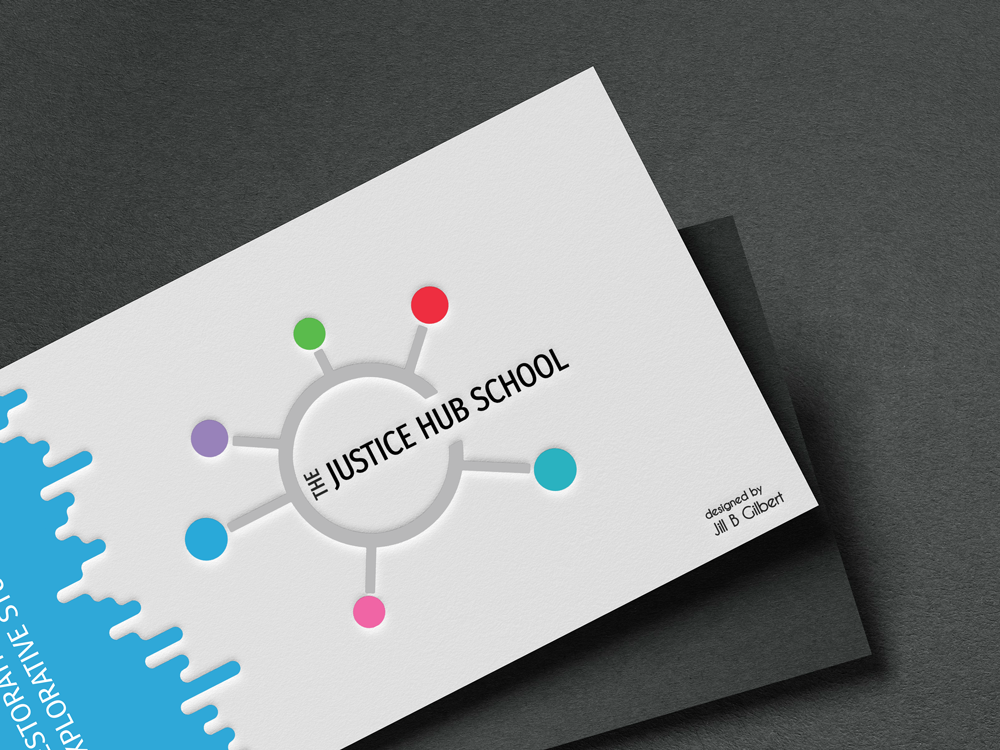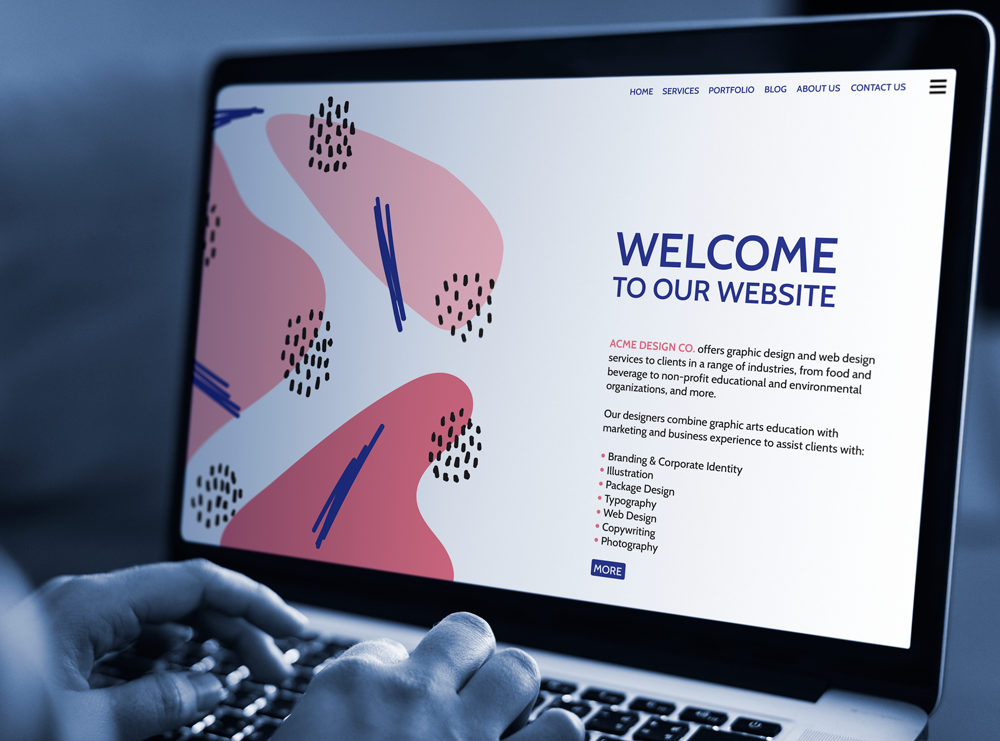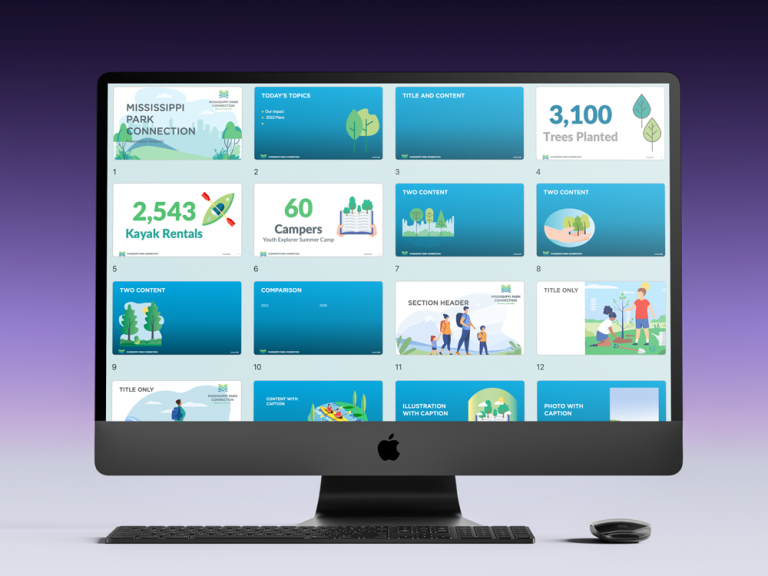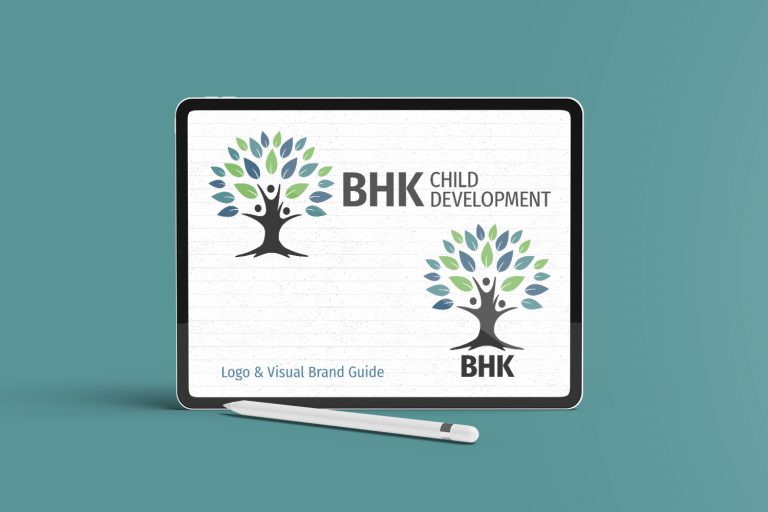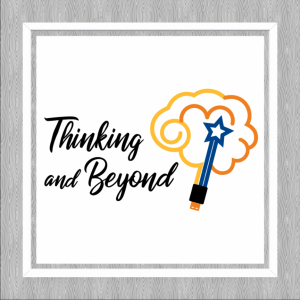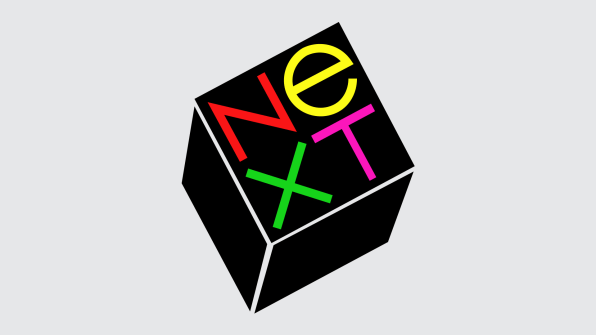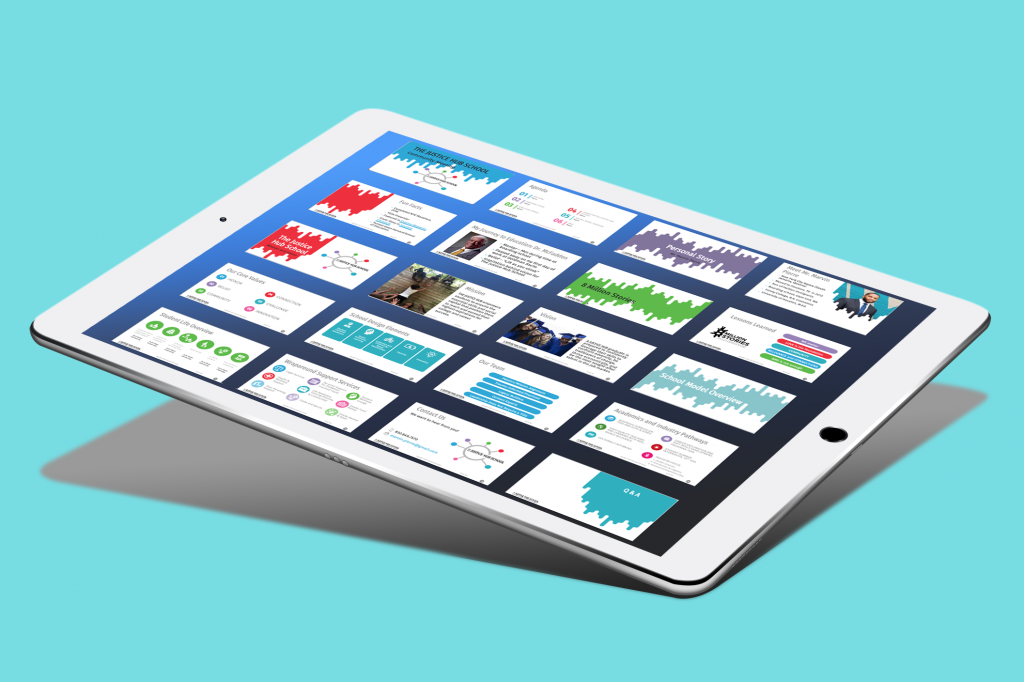
The Justice Hub School provides underserved youth in Houston’s Third Ward with academic and leadership skills to succeed in life. Jill B Gilbert was pleased to create a colorful new brand and a stylish custom presentation templates for this public charter school.
Our graphic design team created two templates aimed at different audiences–prospective donors and board members, and prospective students. Both templates employ Justice Hub’s new brand and color scheme. The image above shows the second, less formal, template on an iPad Pro.

